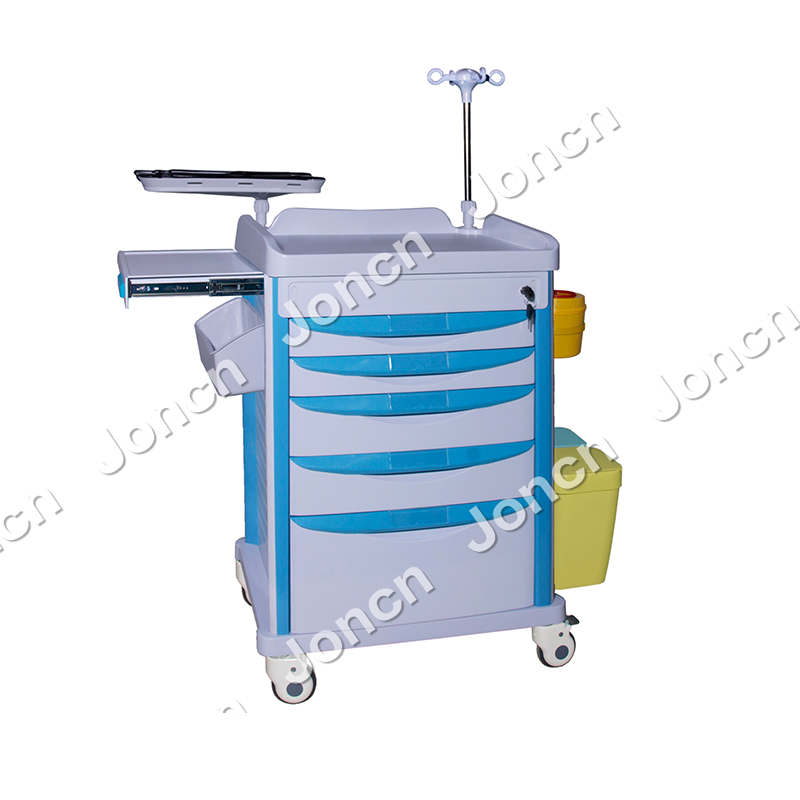
Hospital beds are a critical piece of equipment designed to meet the specific needs of patients, from those recovering from surgery to individuals with chronic conditions. While they may all look similar at first glance, a deeper look reveals a variety of specialized models, each with unique features for different care environments. Here's a breakdown of the primary types of adjustable medical beds and their typical applications.
These are the most basic and affordable type of medical bed. Manual hospital beds are operated by hand cranks, which are used to adjust the height of the bed, as well as the position of the head and foot sections.
Pros: Cost-effective, simple design, and no reliance on electricity, making them a good option for locations where power is unreliable.
Cons: Requires physical effort from a caregiver to make adjustments, which can be difficult or impractical for some users. They are less convenient for patients who need frequent position changes.
Best for: Short-term use, situations with a tight budget, or in environments where the patient has minimal mobility issues and doesn't require constant repositioning.
Semi-electric beds represent a middle ground between manual and fully electric models. These home care beds feature electric controls for adjusting the head and foot sections, but the overall bed height is still changed manually with a hand crank.
Pros: Offers the convenience of powered adjustments for patient comfort, reducing strain on caregivers. They are generally more affordable than fully electric beds.
Cons: The manual height adjustment can still be cumbersome for caregivers.
Best for: Patients who need frequent adjustments to the upper and lower body but don't need the bed to be raised or lowered often.
Full-electric hospital beds are the most popular choice for both home and clinical settings due to their complete automation. All adjustments—head, foot, and bed height—are controlled with a remote, allowing the patient or caregiver to change positions with ease.
Pros: Maximum convenience and autonomy for the patient. The ability to raise and lower the bed electrically is crucial for safe transfers from wheelchairs or for caregivers performing tasks like bathing or wound care.
Cons: Higher cost and reliance on electricity, which means a backup battery is often necessary for power outages.
Best for: Long-term care, patients with limited mobility, and situations where ease of use for both the patient and caregiver is a top priority. These beds are often referred to as adjustable medical beds in the context of advanced features.

Also known as bariatric care beds, these are specifically designed for heavier patients. They feature a wider sleeping surface and a reinforced frame to safely support higher weight capacities, typically ranging from 350 lbs to over 1000 lbs.
Pros: Enhanced safety and stability for bariatric patients. The wider surface area provides greater comfort and reduces the risk of falls.
Cons: Larger footprint and significantly higher cost than standard beds.
Best for: Individuals with higher body mass who require a bed that can safely accommodate their weight and size.
Low hospital beds, or home care beds, are designed to be positioned very close to the floor, significantly reducing the distance a patient might fall. This feature is particularly important for patients at high risk of falls, such as the elderly or those with cognitive impairments.
Pros: Drastically minimizes injury risk from falls. The bed can still be raised to a normal height for caregiver access.
Cons: Can sometimes be more difficult for a patient to get in and out of the bed when it's at its lowest point.
Best for: Fall-risk patients, especially in long-term care facilities or at home.
This category includes a variety of specialized patient beds designed for specific medical conditions. Examples include:
Air-fluidized beds: Used for patients with severe pressure ulcers, these beds use a constant flow of air to create a "floating" sensation, eliminating pressure on the skin.
Rotational beds: These beds slowly rotate a patient to prevent pressure sores and aid in respiratory function, often used in intensive care units.
Turning beds: These beds have a built-in mechanism that can turn the patient automatically, reducing the need for manual repositioning by a caregiver.
Understanding the different types of hospital beds is key to providing safe, effective, and comfortable care. Whether for a short-term recovery or long-term care, choosing the right bed is a crucial decision that impacts patient well-being and caregiver ease.

OBT-B07adjustable movable overbed dining table, designedfor both hospital and home use. With dimensions of 800400725/965mm, this versatile table is equipped with a dining plate and four sturdy casters...
See Details
Multi-functional surgical operating table, a solution designed to meet the diverse needs of modern surgical procedures. With precise Technical Parameters including a length and width of 1960mm and 560...
See Details
Electrical operation room bed for hospital surgeries use, designed to elevate surgical precision and patient comfort to new heights. This operating table boasts a comprehensive range of technical feat...
See Details
ABS plastic workstation adjustable trolley cart, a versatile and robust solution designed specifically for efficient medical environments. Crafted from high-quality ABS materials, our trolley cart ens...
See Details
Multi-functional wireless nursing trolley with Eco-based ABS Material, designed to integrate functionality with style and hygiene. We select ABS plastic due to its strength, durability and lightweight...
See Details
Our economic emergency medical trolleys are designed with multiple compartmentalized drawers and trays, with each area dedicated to storing a specific type of medical supplies. From oxygen masks, endo...
See DetailsIf you are interested in our products, please consult us
Products
Mobile terminal